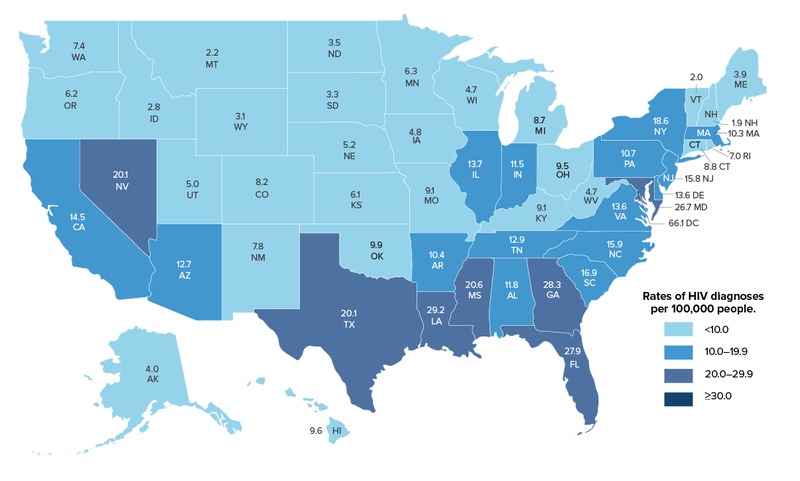AIDS in the US
In the United States, HIV/AIDS has a long and complicated medical history and has had devastating social impacts, especially on gay men. AIDS was first recognized on a large scale in 1981. By the end of the year, over 40% of those diagnosed with AIDS died ("History of HIV and AIDS overview"). This disease, that seemed to selectively affect men who have sex with men, or MSM, came at a decisive time. In the wake of the Gay Liberation Movement of the 1970’s, there was a focus on pride and the more “gay-oriented businesses” were established than had previously existed, giving MSM a safer, more private place to meet each other, such as bars and bathhouses (“History of Gay Rights Movement in U.S.”). This led to more opportunities for intimate relationships and as a result, the HIV virus was rapidly and unwittingly spread through gay communities nationwide. By 1995, over 500,000 people had been diagnosed with AIDS in the United States, and of those people, more than 75% died from complications relating to AIDS ("HIV and AIDS --- United States, 1981--2000").
But HIV/AIDS was not met without a fight. After the retrovirus HLTV-III, or what we now know as HIV, was identified, work began to develop vaccines for HIV and treatments for AIDS. HAART, or Highly Active Antiretroviral Therapy, was introduced in early 1996, and in 1997 it became the new standard of care (aids.gov). HAART, also known as the AIDS cocktail, helped reduce mortality in those with AIDS and allowed for a much longer life expectancy than with previous treatments, per studies done prior to 2006 (Hammer et al.l; Patel et al.). But even with new treatments and more awareness about HIV transmission, rates of infection are still high in many southern states with minorities being disproportionately affected.
Rates of infection in Latino MSM are rising ("NHPC Press Release: HIV Diagnosis"), and there are concerns that the virus is becoming resistant to HIV treatments (TenoRes Study Group). Abstinence-only sexual education, social stigma, and IV drug use all contribute to the spread of HIV today, and many people believe that they aren't at risk of catching the virus (Webb). The battle against is far from over, and it is important now more than ever to get tested and educated about HIV/AIDS.



